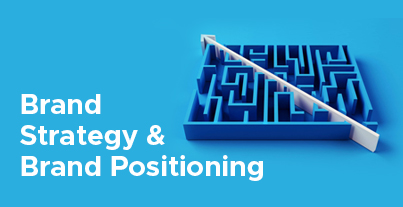To succeed in 2020, brands will have to get back to basics, embrace the power of media platforms and avoid getting carried away by short term goals.
2020 has thrown up a unique set of challenges for brands. Already they were having to contend with rise of digital technology and the shift of customers online and then, like a bull into a China shop, along came Covid 19. The pandemic has had impacts across the board. It’s put budgets and revenue under pressure, but it has also accelerated the move online. With highstreets deserted, customers have been shopping online more than ever. To thrive in this ecommerce arena, brands will have to adapt their strategy. It won’t be straightforward but by focusing on three key areas, you can give your brand the best chance possible.
GET BACK TO BASICS
Establish the emotional connection:
Connect with your prospects before you start selling. Covid 19 has accelerated the shift online. Buying habits are different online compared to bricks and mortar and focus on larger, pack sizes. The challenge here is that these often carry lower profit margins and have a lower frequency of purchase. In other words, it can be tougher to make money from them and you may be tempted to jump-in and start selling. But build the trust through the brand story and experience before you start selling. Your digital assets like website and social media platforms should embody your brand.
Differentiate the experience you provide:
Customers will not be able to touch, feel or test items which creates a real problem when it comes to the big-ticket stuff. Online purchases are fine for small, cheap goods because they do not involve much risk. However, with higher prices come higher risks. Make sure that customers understand what makes you unique. Without the ability to provide physical proof of quality, you need to focus on the customer experience. Critical to this is a more integrated supply chain which incorporates marketing, delivery and after sales services.
Offer Value:
If your marketing team have done their job well, a campaign should generate a spike in demand. However, you need a supply chain which can satisfy that spike to avoid letting your customers down. The point at which customers receive and unbox items is a real moment of truth. Here you’ll either delight or disappoint them and the stakes are high. Having the basic brand visual elements like the logo, the packaging etc right along with a great product ensures the delight. Get these elements right and they will be more likely to become regular customers and enthusiastic brand advocates. Get it wrong and they may spread their disappointment to their friends and family.
PERFORMANCE MARKETING
The rise of ecommerce is seeing websites become media destinations in their own right and the most critical customer touch point. The website should be aligned with how you want your brand to be represented to customers. For this marketing team should understand the essence of what you are and compare it with what customers want. This will help them build a great communication strategy (messaging) for the digital platforms that creates a strong brand positioning in the minds of the customers. Positioning is not something you do but is the result of your customer’s perception of what you do. If you are confused as to how to get this correct the best thing to do is approach an online marketing agency in Dubai who can support you. In China, ecommerce and media are intersecting via live streaming which combines entertainment, retail and influencer marketing in innovative and successful ways. Key to this is continuity and the breaking down of siloes in the marketing process, ensuring that everything works as one. By building on social media and WhatsApp groups, brands can create a network of loyal repeat customers who may even become passionate brand ambassadors. If successful, this network will do much of your advertising for you without your team having to lift a finger.
DON’T FORGET THE LONG TERM
Performance marketing seems great, but there are issues. Because ecommerce boosts your ability to measure outcomes, there is a temptation to rely excessively on performance marketing which focuses on short term outcomes rather than long term goal. With budgets already under pressure thanks to Covid 19 and the prospect of a major global recession, this short-term approach starts to look even more appealing. Businesses will be focusing on the immediate future with short term goals for a lower initial capital outlay, but this can be short sighted. Data can tell you a lot but it doesn’t even nearly approach the whole story. You need to take a step back and ensure you’re not overlooking the long-term development of your brand. It is especially important that you take the positioning you have created and put it to work. It should be the compass for your organization and every touch point the customer interacts with. Even your front desk and customer service processes should reflect it.
Thriving in 2020
Success in 2020 will be challenging. The landscape has transformed dramatically in the space of a few months. Customers are moving online, and their habits and expectations are changing as a result. Brands will need to be agile, integrated, and imaginative to deliver the seamless omnichannel experience their customers want and expect.










